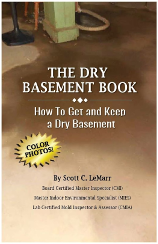Spring Home Maintenance
Spring Home Maintenance
1. Prevent Water Penetration
Inspect the roof, the sheathing, the windows and doors. You want to make sure that the biggest enemy of your home—water—can’t get inside. Check all areas—starting with the roof and working down—where water can work its way in. If you aren’t comfortable on the roof, or if you don’t know what you are looking at (like many homeowners), call in a professional roofer or Home Inspector. The areas where water usually sneaks in is where different materials meet: between your roof and chimney, or between the window and trim. You need to caulk and seal the gaps and cracks that will cause trouble down the road. Caulk will shrink over time as it dries out. It needs to be scraped out and replaced.
2. Check your Air Conditioner
Never cover the A/C unit, as it can trap water inside the unit, corroding the aluminum and provide a prefect home for critters. Make sure the unit is clear of leaves and other debris that might have gotten stuck in the fins. Change any filters now—and make sure you change them regularly throughout the cooling season. That will make a big improvement to your indoor air quality. Call in a qualified HVAC specialist to service the unit to make sure it’s working properly.
3. Check your Gutters and Downspouts
You want to make sure your gutters are clean and in good shape (not leaking)—and that they are still solidly attached to your home. In older homes, where gutters were held to the fascia with metal spikes—the wood might have rotted over time, and the spike has nothing to hold onto.
4. Landscaping
Gardens are great—but they should not be planted too close to your house. You want to make sure that the soil around your home is properly graded so any surface water and snowmelt will flow away from your home, not toward it.
5. Clean your Deck
Your deck is wood, and like all natural materials, wood will decompose over time. It needs to be maintained annually—by staining and/or sealing the wood to preserve it. Rotted or weak boards may need to be replaced. The structure has to be inspected regularly to make sure the deck is safe.
6. Driveway and Paths
Your home should be safe for visitors—so, apart from making sure your paths look good, they need to be level and without trip hazards.
8. Get Rid of Critters
Check under decks, porches and in your garage and shed for critters or for ways they can access those areas. If they can get in, they will nest and breed there—and that’s bad. Close off any holes, and cover entry points with strong wire screens. Put wire cages over vents before birds build their nests. It’s a lot easier to prevent bugs and rodents from getting into your home than trying to get them out once they are inside. Ants can get in through cracks in caulking or deteriorated weather stripping—so, another reason to inspect and replace old caulking.
9. Lightning
Summer is thunderstorm season. We recommend you call an electrical contractor in to install a whole house surge protector and lightning protection system on your home to protect your electrical appliances and electronics






